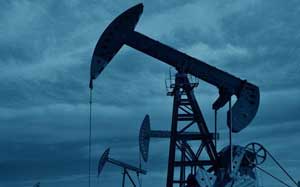What are oilfield chemicals?
Oilfield chemicals refer to agents used in the process of oilfield drilling, completion, oil recovery, water injection, enhanced oil recovery and gathering and transportation.
According to the type code standard of oilfield chemicals used in Chinas oil and gas industry, oilfield chemicals can be divided into six categories. They include general chemicals, drilling chemicals, oil and gas development chemicals, EOR chemicals, oil and gas gathering and transportation chemicals and water treatment chemicals. At present, there are more than 300 kinds of oilfield chemicals produced in China, and the annual consumption is more than 50000t.
Oilfield chemicals are widely used and various. At present, there is no general classification method in the world. The basic principle of code making is scientific, practical and convenient.
The type code of oilfield chemicals is represented by two-stage formula. The first section represents the production process (operation) process of chemicals used in the oilfield. The second paragraph indicates the function of the chemical. There is a dash in the middle.
The process (operation) of chemical agent application and the function of chemical agent shall be marked with the first or second and third letters in English respectively. At the same time, we should also take into account the idioms of various countries.
1. Generally, there are drilling chemicals, including drilling fluid treatment agents.
2. Chemical agents are used in oil and gas development, including those for acidizing and fracturing, involving demulsifier, fluid loss reducer, bactericide, pour point depressant, water plugging and profile control agent, etc.
3. Chemical agents for EOR include polymer and surfactant oil displacement agent, oil and gas gathering and transportation chemical agent and water treatment chemical agent.
Oilfield chemicals are indispensable chemical materials in oilfield development and production, which are widely used in oil exploration, drilling, gathering and transportation, water injection and other processes. It mainly includes mineral products, general chemicals,polyacrylamide copolymer. natural products, inorganic products and special products.
In order to maintain the excellent and stable performance of the mud, so as to meet the needs of drilling technology. Chemical agents (additives) must be added to all kinds of mud (water-based, oil-based, gas). Especially in the complex formation (such as collapse layer, salt gypsum layer) deep drilling or horizontal drilling. A variety of treatment agents are required.
The function of drilling fluid treatment agent is to prepare drilling fluid and maintain and improve the performance of drilling fluid during drilling.
Drilling fluid is the working fluid used in drilling. In the process of drilling, drilling fluid plays an important role. Its functions are as follows.
Suspend and carry cuttings and clean the bottom hole. Lubricating and cooling the bit, increasing the bit footage, and impacting the formation through the water hole of the bit are conducive to breaking the rock. Mud cake is formed to increase wellbore stability.
It can be seen that good drilling fluid performance is a reliable guarantee for the smooth drilling operation. The drilling fluid treatment agent is the basis to ensure the stability of drilling fluid performance. Without high-quality drilling fluid additives, it is impossible to obtain a drilling fluid system with good performance.
For high temperature mud, high temperature resistant drilling fluid treatment agent is its core. Therefore, in recent years, according to the needs of high temperature resistant drilling fluid, domestic researchers have made great efforts to improve the drilling fluid quality. Some exploratory studies have been carried out on drilling fluid additives suitable for temperature resistance over 220°C。
Common drilling fluid materials and their functions
Polyacrylamide
There are many applications of non-ionic flocculants in water treatment industry. The nonionic polyacrylamide is a high molecular polymer. The molecular chain contains a certain amount of polar genes, which can adsorb suspended solid particles in water, and make the particles bridge to form large flocs. It can accelerate the sedimentation of particles in the suspension, accelerate the clarification of the solution and promote the filtration.






